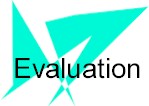| | One type of curriculum-based measurement is Criterion-Referenced Tests
 |
The purpose of these tests is to evaluate student performance in relation
to specific instructional objectives. The information provided is helpful for
instructional decisions, but not for eligibility decisions. These tests are
usually used in later stages of assessment to pinpoint specific skills for
instruction. One basic type of criterion referenced test are regular tests and
quizzes that a teacher administers in the classroom. In addition to these,
three common examples of criterion-referenced tests include:
|
 | Brigance Diagnostic Inventories:
This test consists of three forms. One form is the Inventory of Basic
Skills (grade k-6). This measures readiness, reading, spelling, writing, and
mathematics. |
 | A second form is the Comprehensive Inventory of Basic Skills
(grade k-9). This measures readiness, spoken language, reading, spelling,
writing, and mathematics. |
 | A third is the Inventory or Essential Skills
(grades 4-12). This measures reading, spelling, writing, and mathematics. |
 | Hudson Education Skills Inventory (grades K-12). This test is used to
measure readiness, reading, spelling, writing, and mathematics. |
 | Multilevel Academic Skills Inventory (grades 1-8). This test is used to
measure reading, spelling writing, and mathematics. |
| |
|






 A website created for families
who want to know more about the assessment process!
A website created for families
who want to know more about the assessment process!